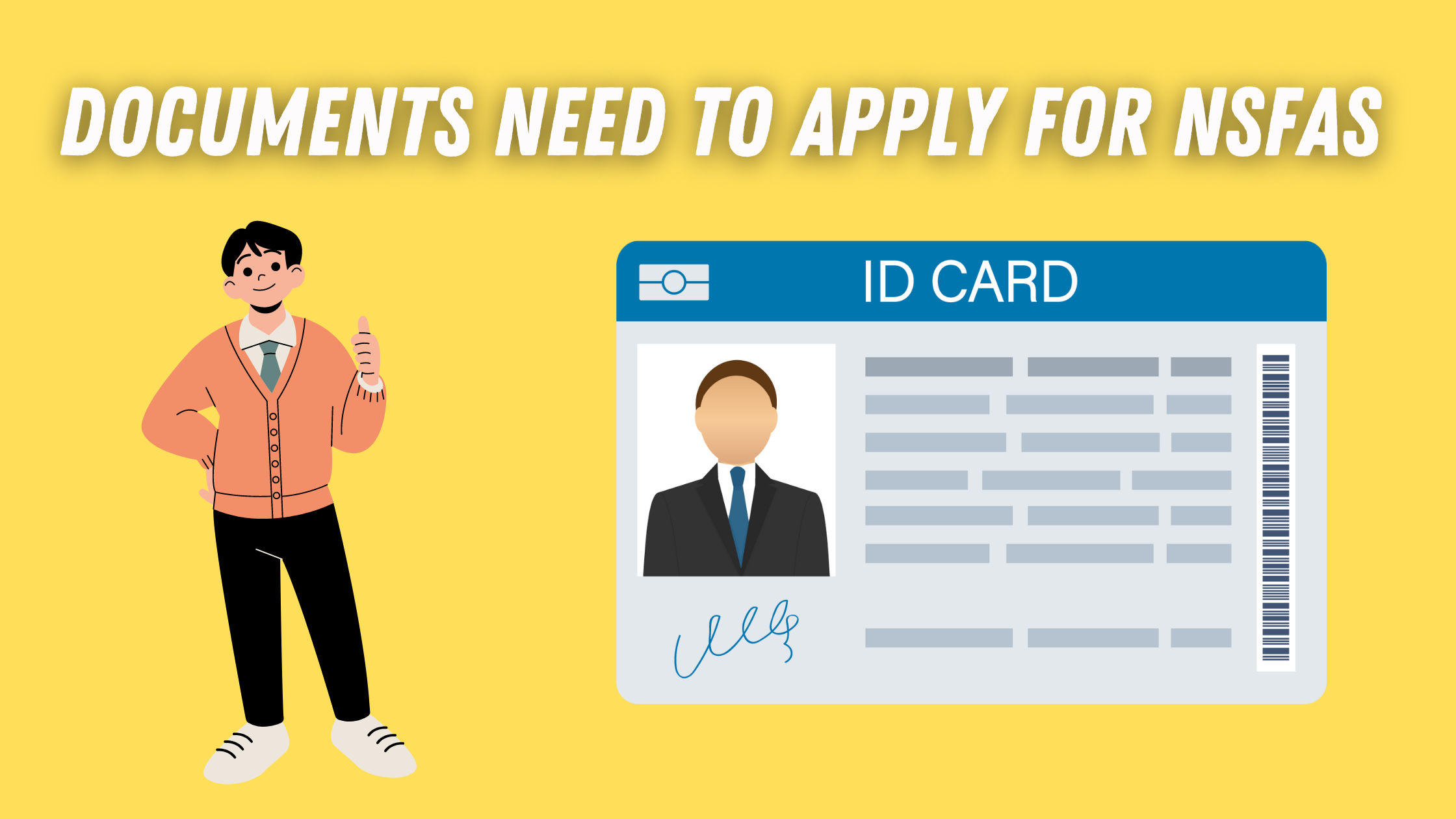Navigating the world of financial aid can seem daunting, especially when it involves an intricate program like the National Student Financial Aid Scheme (NSFAS). It was established with objevtive of making higher education and training affordable to those who come from impoverished backgrounds in South Africa.
In this article, we’ll discuss the essential documents needed to apply for NSFAS benefits.
Applying For NSFAS Benefits
The National Student Financial Aid Scheme (NSFAS) is a South African program designed to aid eligible students by providing financial support for their studies at any public university or technical and vocational education and training (TVET) college. NSFAS provides funding in the form of bursaries to help cover tuition fees, accommodation, meals, books, and transportation.
Eligibility for NSFAS
To be considered eligible for NSFAS, you must be a South African citizen who is planning to study or already enrolled at any of the public universities or TVET colleges. Additionally, you must come from a household with a combined annual income of R350,000 or less. For students with disabilities, the household income cap is R600,000.
The Application Process
The application process for NSFAS is conducted online on the NSFAS website. You start by creating a myNSFAS account on the NSFAS website. Once you have successfully registered, log in to your account and click on the ‘Apply’ tab. This will lead you to an online application form.
Documents Need When Applying For NSFAS Application
- A certified copy of your ID or a birth certificate if you do not have an ID yet.
- Certified copies of ID documents of your parents, guardian, or spouse.
- A proof of income or certified copies of SASSA cards for your parents, guardian, or spouse. If they are employed, their recent payslip will be required.
- If you have dependents, you will need to provide their birth certificates and proof of income.
- If you have a disability, a completed and signed Disability Annexure A Form is necessary.
- A completed consent form, which you can download from the application portal.
All documents must be certified within 3 months of applying and should not be older than 3 months. When submitted online, they should be clear and easy to read.
Using NSFAS Funding
After your application has been accepted, the fund will directly pay the University or TVET college for your tuition and registration fees. The amount of the bursary cover varies according to university costs, your registration fee, and your family’s income level. For other necessities such as meals, books, and transportation, monthly allowances will be provided. It is noteworthy that NSFAS covers funding for a full academic year and students have to apply each year.
By providing this financial aid, NSFAS endeavors to enable greater access to higher education and training in South Africa, particularly for those from lower-income households. Appropriately utilizing this fund can help ensure a smooth academic journey.
Identification Documents
To apply for the NSFAS, the first essential document is your identification. This can include your ID card or birth certificate for South African citizens or a passport for international students. It is crucial to have these documents ready as they validate your identity and make certain that the application is indeed yours. To get your ID, visit your local Department of Home Affairs. If you are an international student, ensure your passport is not expired.
Proof of Income
Next, you must provide proof of household income to affirm your financial status. The NSFAS requires this document to determine if you qualify for financial aid. Your parents, guardian, or spouse can provide a payslip or a letter from their employer as proof of their income. In case they are self-employed, they can provide an affidavit stating how much they earn. If they are unemployed, a sworn statement confirming the unemployment status is needed. Ensure that these documents are not older than three months when you submit them.
Academic Documents
Lastly, NSFAS will need your academic records. This includes your latest school results and a copy of your grade 12 certificate if you have already passed grade 12. If you are already attending university or college, provide your academic transcripts and a progress report if you are reapplying. The organization requires these documents to verify if you meet the academic criteria for the funding.
And so, by preparing these documents – Identification, Proof of Income, and Academic Reports, you’ll be ready to apply for the NSFAS scholarship. Remember to check each document for accuracy and update any outdated or expired identification or income proofs. This preparation will smooth the application process, thus paving a path towards securing the financial aid.
Application Process
The process starts with gathering your necessary documents. The key pieces you’ll need include a certified copy of your Identity Document or birth certificate if you don’t have an ID yet, as well as certified copies of IDs of your parents or guardians. If your parents are employed, you need to get their recent pay slips not older than three months. If they are not employed, a signed and dated affidavit explaining this is required. Other necessary documents are a proof of residence and a signed consent form which can be downloaded from NSFAS website.
Understanding the Online Application System
To apply for NSFAS, you need to visit its official website and navigate to the application section. You’ll create an account using your email address; remember to use one you regularly check as NSFAS uses email for communication. Once you’ve created an account, you can access the online application form.
Filling Out the NSFAS Application Form
When filling out your application, be sure to input your details accurately. The form requires personal information, education history, and details about your parents or guardians’ income. You may also need to provide a letter of admission from the public university or TVET college you’ve applied to. Address all questions honestly and thoroughly, leaving nothing blank. If you make an error, you have an option to save your application and fix it later.
Submitting Your Application
After validating your form for completeness and accuracy, submit it before the deadline, typically in late November or early December. Take note of your application reference number. After successful submission, an SMS will be sent to you to acknowledge receipt. Your submitted NFSAS application will leave an indelible digital trail, so it’s important to get everything right the first time.
Using Your Documents in the Application
As part of your application process, you’ll be prompted to upload the documents you collected earlier. Each document should be a clear scan and not bigger than 2 MB each. Make sure you match each document with the appropriate section of the application form. Each document should be certified and not older than three months.
Following Up After Submission
Once submitted, you can track your application status online by logging into your MyNSFAS account. It’s usually processed within a few weeks, and you’ll receive an SMS or email about the outcome. Ensure you consistently check your profile and maintain an active line of communication with NSFAS. If you face difficulties during your application process, don’t hesitate to consult NSFAS through their customer care center.
Conclusion
Understanding NSFAS’s inner workings, from its purpose to its application process, can greatly minimize any potential hiccups you might encounter. This knowledge aids you in preparing documents effectively as well as applying confidently.
Although the process may appear complex, the distilled information shared aims to simplify this journey, ensuring a seamless application process. Maintain persistance and optimism in the course of this pursuit as it can serve as a stepping stone, bridging the financial gap towards your dreams of higher education and beyond.


